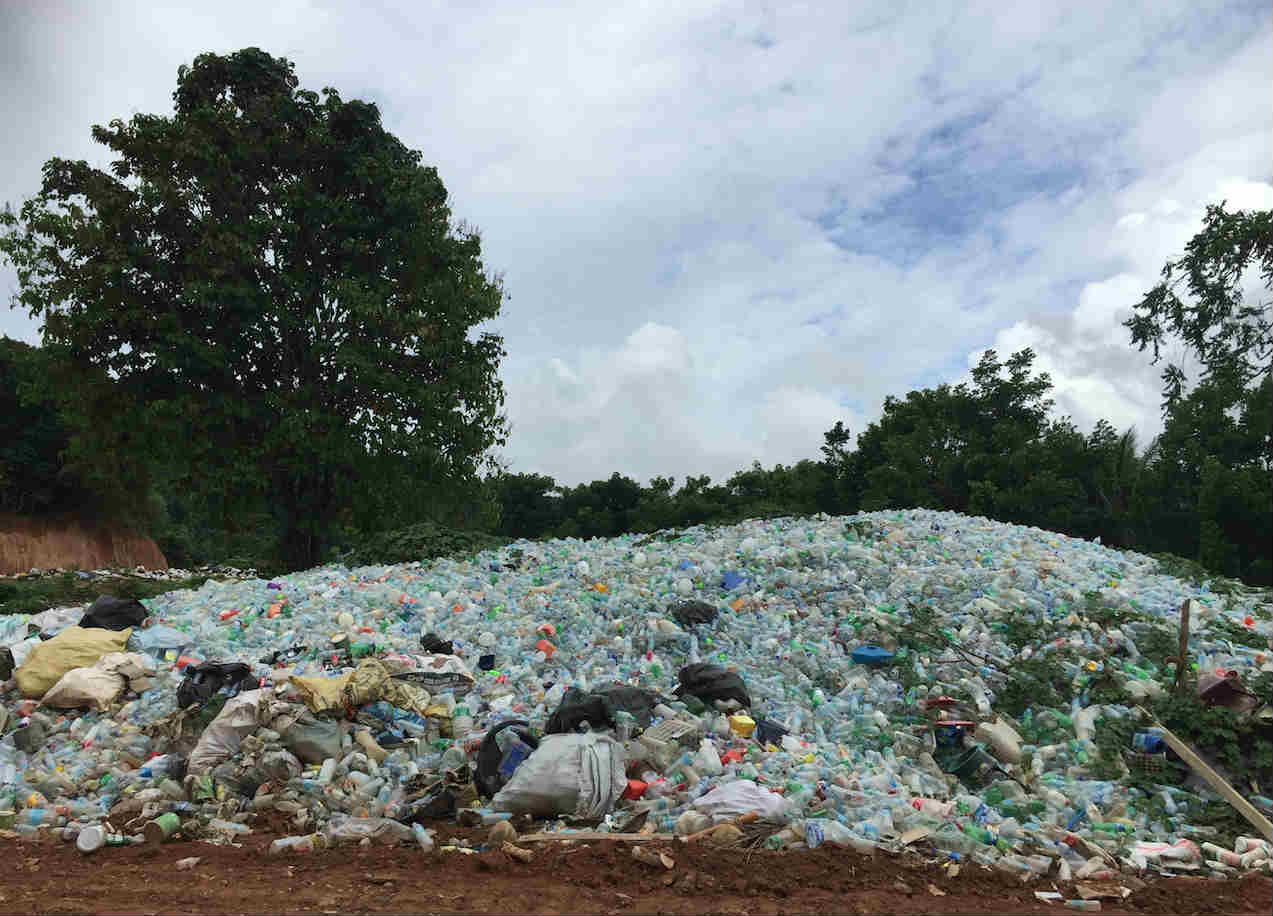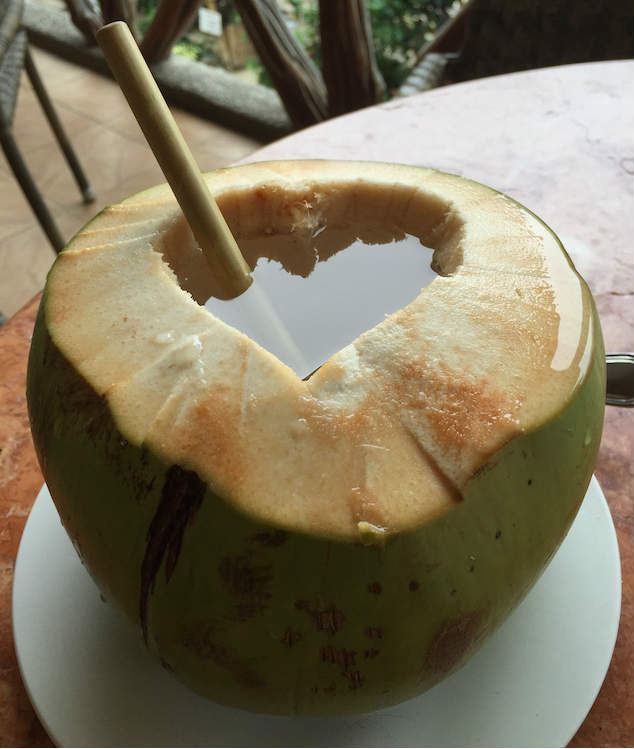READ: PART 1: EL NIDO: Tourism's boon and bane
EL NIDO, Palawan – These days, it’s not only the resorts and restaurants in El Nido’s town center that is feeling the growth of its local tourism industry. About 7 kilometers from the town center, El Nido’s 4.3-hectare landfill in Barangay La Libertad has been feeling the negative impact of the influx of tourists and uncontrolled development.
The volume of garbage collected in El Nido has doubled since 2014, the year before tourist arrivals in the town hit the 100,000-mark.
The increase does not only put also additional pressure on the town’s limited resources, but can also undermine the ongoing rehabilitation efforts by national and local government officials in the popular tourist destination.
Data from El Nido municipal government showed that before 2014, the town collected almost 10 tons of garbage per day. Now, volume of garbage collection reaches almost 22 tons a day.
“We were surprised with the increase in the number of tourists and establishments and the volume of garbage.” said Rex Dadule of El Nido’s municipal environment office, in an interview last June.
“The current sanitary landfill can still last up to 5 years but if we are not able to address the huge volume of garbage it can reach its capacity in a year,” the official added.

Solid waste management has been a perennial issue that has hounded popular tourist destinations. In Boracay, government officials said in a recent study that 90 tons of solid waste are generated in the island daily, higher than the 80.77 tons per day, the average volume if the tourist destination’s carrying capacity is to be observed. (READ: IN CHARTS: Boracay is bursting at the seams)
In El Nido, the tourism boom made garbage collection and implementation of solid waste management practices more challenging.
“Waste management and collection is easier before since there were only very few people and establishments,” said former municipal councilor Rico Gonzales.
According to the 2015 Environmentally Critical Areas Network (ECAN) Resource Management Plan for El Nido, one to two dump trucks per barangay are needed for an efficient garbage collection.
El Nido now has two dump trucks and two trucks that collect garbage in the entire town. Compounding the problem are residents who do not segregate their garbage and dump them in the streets.
Local officials said they encouraged residents and businesses to build composts for biodegradable wastes – which account for 50% of the town’s garbage collection – particularly in the town proper where most establishments are located.
Data from the municipal planning office, however, showed that only 3% of the households practice composting in El Nido.
Washed-up trash
But the volume of garbage collected from the town is not the only problem. Washed-up garbage has appeared along El Nido’s famous lagoon and beaches in recent months.
A photo of a pile of trash floating in El Nido’s Secret Lagoon made the rounds on social media in August 2018, prompting the local community and officials to intensify beach cleanups.

“The increase was so immense. We used to get around two to 3 sacks of garbage in a beach. Now, we collect up to 80 sacks in one beach,” said Judith Distal, a restaurant owner in El Nido who participates in beach cleanups.
In September 2018, the municipal government started banning the use of single-use plastic and plastic bottles in boat tours to reduce garbage in tourist areas.
The ban came less than a month after the Department of Environment and National Resources (DENR), the Philippine Coast Guard, private organizations, tour operators and local business sector collected 140 sacks of garbage in a cleanup in Secret Lagoon in Miniloc Island.
Local officials. however, noted that 70% of the collected washed-up trash in the cleanup are plastic bottles. They also noticed that some of the plastic trash came from other countries and could have reached El Nido during the onset of the southwest monsoon or habagat.
“We have recovered plastic bottles from Thailand, Vietnam, Indonesia, Malaysia, China, India and Japan,” said El Nido Mayor Nieves Rosento in a statement after a beach cleanup in August.
Environmental advocates believe that incidents of washed-up trash in beaches, including El Nido, is an indication of the magnitude of plastic pollution in the Asian region.
A 2015 report by Ocean Conservancy and McKinsey Center for Business and Environment said 60% of plastic waste in the ocean came from China, Indonesia, the Philippines, and Vietnam.
“Plastics pollution is a transboundary problem that calls for transboundary solutions,” said Angelica Pago, media campaigner for Greenpeace, adding that there should also be pressure to demand action from companies that use plastic for packaging.
“It’s time to call for corporate social responsibility and tell these companies to reduce their plastic production and look for better, alternative delivery systems for their products.”
Plastics ban
As early as 2013, El Nido passed an ordinance regulating the use of plastic drinking straws, cellophane, plastic bags, and stryrofoam as containers, and promoting instead the use of ecobags and other containers made of environment-friendly materials.
The ordinance prohibits business establishments from using styrofoam as food containers and plastic bags as packaging for dry goods and as secondary packaging material for wet goods.
Strict enforcement of the ordinance, however, started only in December 2017 after the town launched a campaign to ban plastics.
“They really have to strictly implement it and intensify their campaign now because of our problem with our landfill,” said Irma Marcelo of local NGO El Nido Foundation.
Data from the municipal environment office of El Nido showed that recyclables, including plastic bottles, account for 15% of the garbage collected in the town.
El Nido’s plastic ban initially focused on the use of single-use plastics. The town has issued at least 100 notices of violations to establishments, market stalls, and vendors who violated the ordinance.
In November 2018, local officials advised tourists to bring their own water tumblers when going on boat tours and prohibited them from bringing bottled water.

Some restaurant and resort owners in the town, meanwhile, have started using bamboo straws made by residents of Mabini, New Ibajay, Sibaltan, and San Fernando – barangays that are not heavily dependent on tourism activities.
Clean water supply
Reducing the use of plastic bottles in El Nido, however, requires addressing another problem that has plagued the town for years: its water supply.
Data from the municipal planning and development office showed that around 56% or 4,405 households still get their water from dug wells.
In January 2014, El Nido declared a state of calamity after a spike in reported incidents of hepatitis. Back then, local health officials confirmed 83 cases of hepatitis and reminded the public and establishments to observe proper sanitation in handling food.
Business owners said demand for bottled water is high because tourists and residents are wary of their source of drinking water and afraid of getting water-borne diseases.
“I once received an email from a tourist saying, ‘I want to come in December and I am worried about diarrhea.’ I did not know what to tell him,” Distal said, adding that some tourists still prefer to buy bottled water instead of drinking service water offered by establishments.
New water system and proposed landfill
RJ dela Calzada, El Nido’s municipal administrator, however, said a P48-million water system project in the town funded by a loan grant from the Development Bank of the Philippines and supported by the provincial government is set to be completed by December 2018.
The project aims to provide barangays a Level III water system or a reservoir and piped distribution network with adequate treatment facility that provides water that meets the Philippine National Standards for Safe Drinking Water.
Dela Calzada also said they have likewise identified proposed new areas for a landfill that would undergo assessment by the Mines and Geosciences Bureau (MGB).
While the town is waiting for these new infrastructure, it is focusing on sustaining its plastic ban and on conducting information campaign on waste management in barangays and schools.

The campaign in schools discusses plastic pollution, microplastics, and the impact of improper garbage disposal on marine resources and health. It also teaches garbage segregation and encourages participation in beach cleanups.
The municipal tourism office and local NGO El Nido Foundation, meanwhile, have also conducted seminars for tour guides. Aside from providing basic first aid training to tour guides, the seminar includes discussion of national and local environmental laws.
“We incorporate issues like sanitation, food handling, coastal resource preservation, and waste management during boat tours so they will learn how to protect our natural resources and source of livelihood,” Marcelo said.– Rappler.com
Top photo: NACPAN BEACH. This beach in El Nido remains a favorite among tourists. Photo by Jesus Llanto.
This story is part of a series on tourism and waste management in the Philippines and was supported by the Internews’ Earth Journalism Network (EJN).